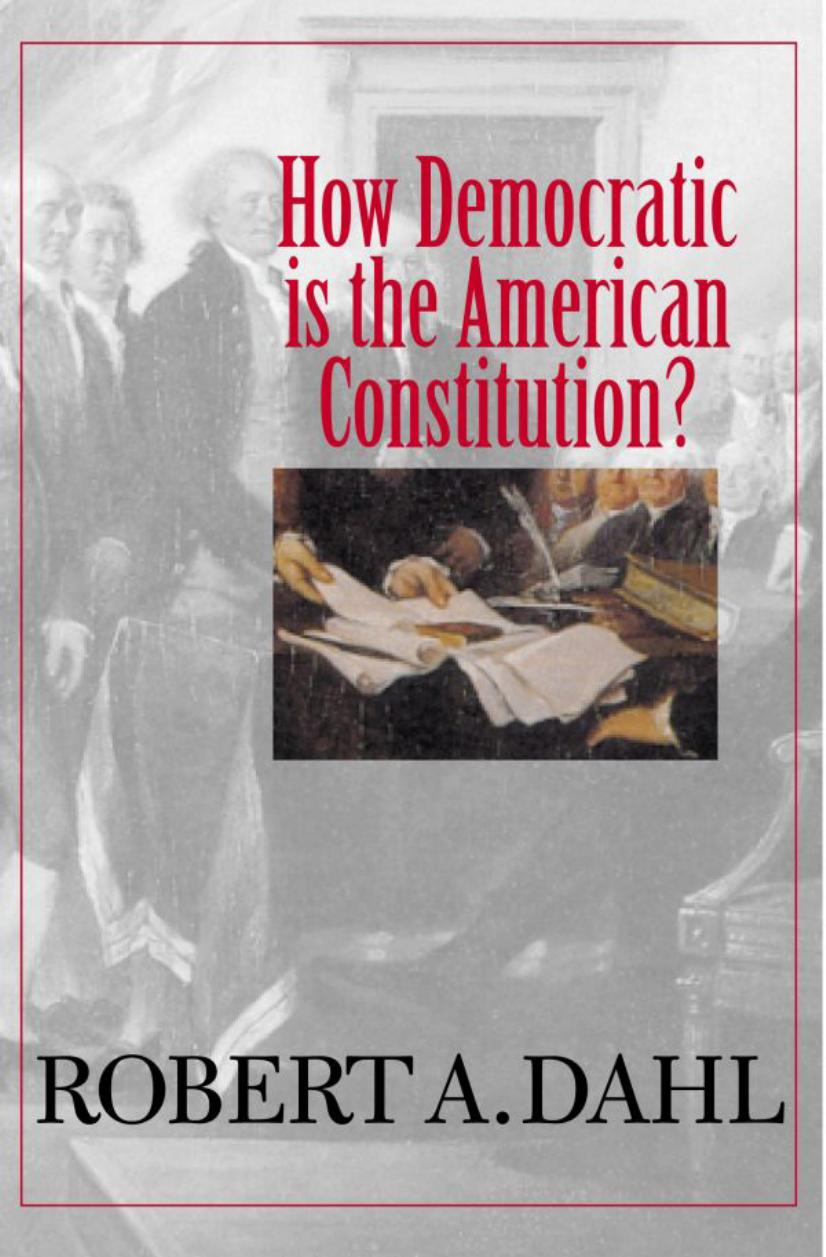How Democratic is the American Constitution? by Robert A. Dahl

Author:Robert A. Dahl [Dahl, Robert A.]
Language: eng
Format: epub, pdf
ISBN: 978-0-300-13372-1
Publisher: Yale University Press
Published: 2003-05-11T16:00:00+00:00
From an American perspective, the result can be unbelievable. In stark contrast to Holland and Switzerland, Swedish cabinets have frequently been drawn from a party or coalition that has actually lacked a majority of seats in parliament. In the past century, “minority governments have been by far the most common. The average parliamentary support enjoyed by governments between 1920 and 1994 has been 41.5 percent.” You might well wonder how minority governments could ever get anything accomplished—or, for that matter, remain very long in office. The answer seems to be that in order to gain a broad consensus both in the parliament and in the country at large, even minority governments negotiate with representatives of parties outside the government. In short, even minority governments govern by consensus.
If you wonder why the Dutch, the Swiss, and the Swedes prefer proportionality to majoritarianism, the answer is fairly clear: not only does it seem to them much fairer but it also helps to achieve and maintain a broad consensus for government policies.
What is more, proportionality can strengthen consensus not just for policies but for democracy as well. The reason appears to be that proportionality results in fewer losers. To clarify this point let me overstate it: In a majoritarian system the only winners in elections are the citizens who happen to be in the majority; all the other citizens, being in the defeated minority, are losers. By contrast, in proportional systems with consensus governments, everyone—well, almost everyone—can win, not everything they hoped for perhaps but enough to leave them basically satisfied with their government.
Lest you suppose that these judgments are nothing more than interesting speculations, let me cite some persuasive supporting evidence.15
In a 1990 survey of citizens’ views in eleven European democracies, respondents were asked how satisfied they were with “the way democracy works” in their country. They also reported how they voted in their country’s last national election. Knowing the outcome of that election in each country, the authors of the study classified the respondents as winners or losers. The eleven countries were then arranged from the most majoritarian, Britain, to the most consensual, the Netherlands. The results, which the authors of the study describe as “robust,” were pretty clear: In the more consensual countries, losers were almost as satisfied as the winners with the way democracy worked in their country. By contrast, in the more majoritarian countries, losers were much more likely to be dissatisfied.
To describe the results another way, suppose that in one country 70 percent of the winners but only 40 percent of the losers are satisfied with the working of democracy, a difference of 30 percent. In another country, say, 70 percent of the winners and 65 percent of the losers are satisfied, a difference of only 5 percent. In the study of eleven European democracies that I just mentioned, this difference in satisfaction with the way democracy worked decreased steadily from large differences in the most majoritarian countries like Britain—around 25 percent—to almost negligible differences in the most consensual countries like the Netherlands, where it was less than 5 percent.
Download
How Democratic is the American Constitution? by Robert A. Dahl.pdf
This site does not store any files on its server. We only index and link to content provided by other sites. Please contact the content providers to delete copyright contents if any and email us, we'll remove relevant links or contents immediately.
The Secret History by Donna Tartt(18752)
The Social Justice Warrior Handbook by Lisa De Pasquale(12082)
Thirteen Reasons Why by Jay Asher(8738)
This Is How You Lose Her by Junot Diaz(6701)
Weapons of Math Destruction by Cathy O'Neil(6085)
Zero to One by Peter Thiel(5638)
Beartown by Fredrik Backman(5548)
The Myth of the Strong Leader by Archie Brown(5375)
The Fire Next Time by James Baldwin(5200)
How Democracies Die by Steven Levitsky & Daniel Ziblatt(5096)
Promise Me, Dad by Joe Biden(5036)
Stone's Rules by Roger Stone(4989)
100 Deadly Skills by Clint Emerson(4798)
A Higher Loyalty: Truth, Lies, and Leadership by James Comey(4797)
Rise and Kill First by Ronen Bergman(4658)
Secrecy World by Jake Bernstein(4594)
The David Icke Guide to the Global Conspiracy (and how to end it) by David Icke(4557)
The Farm by Tom Rob Smith(4404)
The Doomsday Machine by Daniel Ellsberg(4375)
